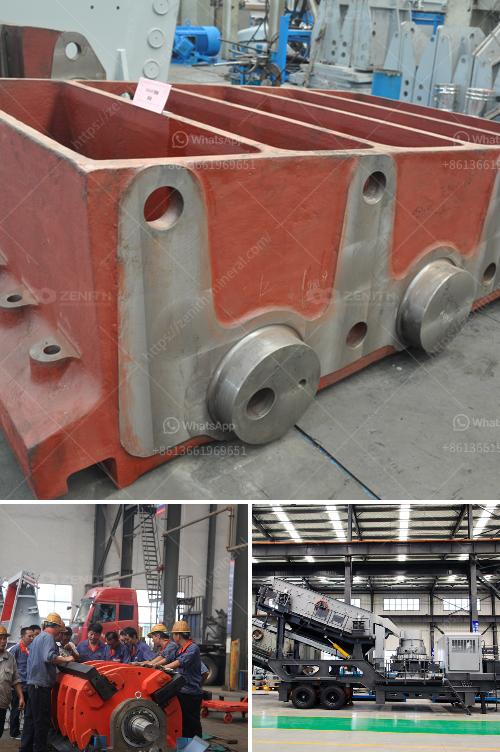Primary crushing equipment refers to the machinery used in the initial stage of the crushing process in mining and aggregate production. This equipment is designed to reduce large, raw materials, such as rocks and ores, into smaller, more manageable pieces. The primary crushing stage is crucial because it prepares the material for further processing and ensures that subsequent stages of crushing and screening can operate efficiently.
Types of Primary Crushing Equipment
-
Jaw Crushers:
- Description: Jaw crushers are one of the most commonly used primary crushers. They consist of two plates, one stationary and one movable, which form a V-shaped chamber. The material is fed into the top of the chamber and is compressed between the two plates, breaking it into smaller pieces.
- Advantages: Jaw crushers are known for their high capacity, ability to handle large feed sizes, and their efficiency in breaking down hard and abrasive materials.
- Applications: They are widely used in mining, quarrying, and recycling operations.
-
Gyratory Crushers:
- Description: Gyratory crushers are similar to jaw crushers but have a circular gap and a conical head. The material is fed into the top of the crusher and is crushed between the gyrating head and the stationary bowl.
- Advantages: Gyratory crushers can handle very large feed sizes and have a high throughput capacity. They are also capable of producing a more uniform particle size.
- Applications: These crushers are typically used in large-scale mining operations and for processing very hard materials.
-
Impact Crushers:
- Description: Impact crushers use the principle of rapid impact to crush the material. The material is fed into a chamber containing a high-speed rotor with hammers or blow bars. As the rotor spins, the material is struck by the hammers and thrown against impact plates, breaking it into smaller pieces.
- Advantages: Impact crushers are effective for producing a high reduction ratio and can handle a variety of materials, including softer and less abrasive ones.
- Applications: They are often used in recycling operations and for producing aggregate for construction.
Importance of Primary Crushing Equipment
- Efficiency: Proper primary crushing equipment ensures that the material is reduced to a size that can be efficiently processed by secondary and tertiary crushers. This improves the overall efficiency of the crushing process.
- Cost-Effectiveness: By reducing the size of the material early in the process, primary crushers help to minimize the wear and tear on secondary and tertiary crushers, leading to lower maintenance costs and longer equipment life.
- Safety: Primary crushing equipment is designed to handle large, heavy materials safely, reducing the risk of accidents and injuries in the workplace.
Selection Criteria
When selecting primary crushing equipment, several factors need to be considered:
- Material Characteristics: The hardness, abrasiveness, and moisture content of the material will influence the choice of crusher.
- Feed Size: The maximum size of the material that the crusher can handle.
- Capacity Requirements: The required throughput capacity to meet production goals.
- Operational Considerations: Factors such as ease of maintenance, availability of spare parts, and overall reliability of the equipment.
In summary, primary crushing equipment plays a vital role in the initial stage of the crushing process, preparing raw materials for further processing and ensuring the efficiency and cost-effectiveness of the entire operation. The choice of equipment depends on various factors, including the characteristics of the material, the required capacity, and operational considerations.

